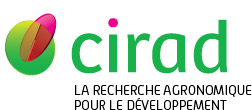Graefe Sophie, Meyer-Sand Lennart Flavio, Chauvette Katja, Abdulai Issaka, Jassogne Laurence, Vaast Philippe, Asare Richard. 2017. Evaluating farmers' knowledge of shade trees in different cocoa agro-ecological zones in Ghana. Human Ecology, 45 (3) : 321-332.
|
Version Online first
- Anglais
Accès réservé aux personnels Cirad Utilisation soumise à autorisation de l'auteur ou du Cirad. art%3A10.1007%2Fs10745-017-9899-0.pdf Télécharger (928kB) | Demander une copie |
|
|
Version publiée
- Anglais
Accès réservé aux personnels Cirad Utilisation soumise à autorisation de l'auteur ou du Cirad. art%3A10.1007%2Fs10745-017-9899-0.-editepdf.pdf Télécharger (918kB) | Demander une copie |
Quartile : Q2, Sujet : ANTHROPOLOGY / Quartile : Q2, Sujet : SOCIOLOGY / Quartile : Q3, Sujet : ENVIRONMENTAL STUDIES
Résumé : Shade trees are an integral part of most cocoa growing systems across the world. This study assesses farmers' local knowledge of shade trees at two locations in Ghana with different climatic conditions and vulnerability to climate change. Akumadan is located in the northern dry part of the cocoa belt representing marginal conditions for cocoa cultivation, whereas Asankragua is located in the southern wet part, more ecologically favorable for cocoa cultivation. Inventories were conducted to assess the abundance of species, their structural characteristics and benefits to cocoa systems. Results show that cocoa farmers have detailed knowledge on the functions of shade trees in cocoa systems and prefer species that provide specific needs according to the location. However, abundance of species in a location does not necessary translate into beneficial impacts on cocoa productivity. In the drier part of the cocoa belt, income diversification through shade trees is an adaptation strategy to the increasingly marginal conditions for cocoa production, which has led to the high proportion of fruit trees among the most abundant species. In contrast, farmers in the southern part of the cocoa belt select shade trees for their high cocoa compatibility. Adaptation strategies for cocoa farmers should therefore promote species that best accommodate farmers' economic, agronomic and environmental needs.
Mots-clés Agrovoc : agroforesterie, plante d'ombrage, Theobroma cacao, changement climatique, adaptation aux changements climatiques, arbre fruitier, production, choix des espèces, arbre à buts multiples, Terminalia ivorensis, Terminalia superba, culture associée
Mots-clés géographiques Agrovoc : Ghana
Classification Agris : F08 - Systèmes et modes de culture
K10 - Production forestière
Champ stratégique Cirad : Axe 1 (2014-2018) - Agriculture écologiquement intensive
Auteurs et affiliations
- Graefe Sophie, Georg-August University of Göttingen (DEU)
- Meyer-Sand Lennart Flavio, Georg-August University of Göttingen (DEU)
- Chauvette Katja, Georg-August University of Göttingen (DEU)
- Abdulai Issaka, Georg-August University of Göttingen (DEU)
- Jassogne Laurence, IITA (UGA)
- Vaast Philippe, CIRAD-PERSYST-UMR Eco&Sols (FRA)
- Asare Richard, IITA (GHA)
Source : Cirad-Agritrop (https://agritrop.cirad.fr/584172/)
[ Page générée et mise en cache le 2025-09-28 ]




